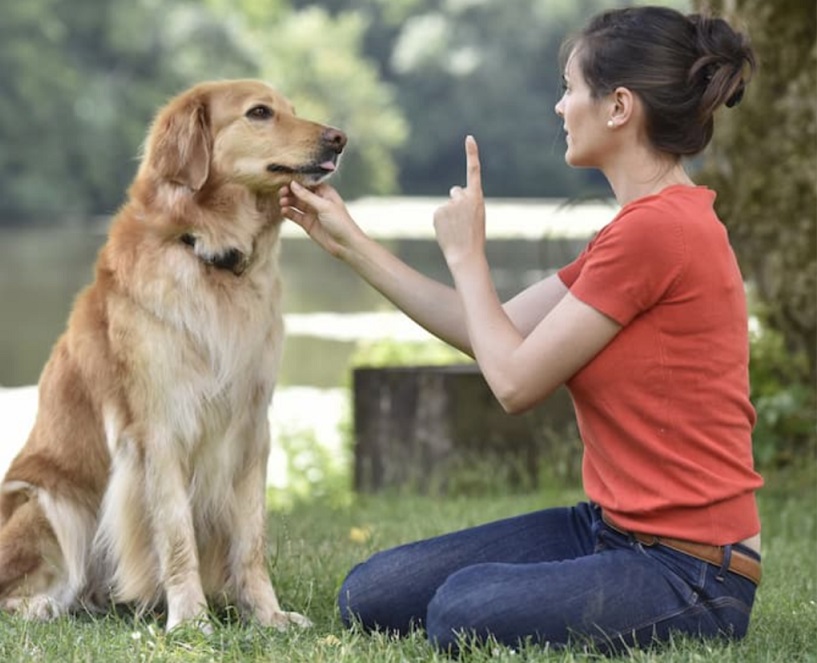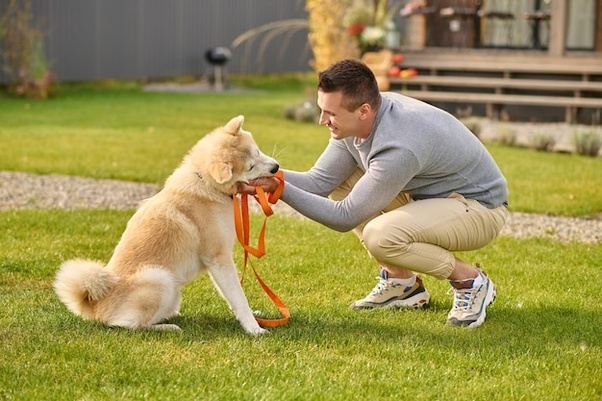Positive training may be the solution for Behavioral Issues. This guide will explore the benefits of positive training and how it can help address behavioral problems in a kind and effective manner. Whether you have a dog, cat, or any other companion animal, positive training techniques can make a significant difference in their behavior and overall well-being. Join us as we delve into the world of positive training and discover how it can transform your relationship with your furry friend.
Understanding Behavioral Issues
Common behavioral issues in Dogs
Dogs can sometimes exhibit various behavioral issues that can cause distress to both themselves and their owners. Some of the most common behavioral issues in Dogs include:
- Aggression: This includes biting, growling, and lunging towards people or other animals.
- Separation anxiety: Dogs may become anxious and exhibit destructive behavior when left alone.
- Excessive barking: Some Dogs tend to bark excessively, causing disturbance to neighbors and stress to owners.
- Fear and phobias: Dogs can develop intense fear towards certain objects, sounds, or situations.
- House soiling: This refers to Dogs urinating or defecating indoors, even when they are housetrained.
- Compulsive behaviors: Dogs may repetitively engage in certain actions, such as tail chasing or excessive licking.
- Resource guarding: Some Dogs exhibit aggression when they try to protect their food, toys, or territory.
Causes of behavioral issues
Behavioral issues in Dogs can have several underlying causes, including:
- Lack of socialization: Insufficient exposure to various people, animals, and environments during a pet’s early development stages can lead to behavioral issues.
- Traumatic experiences: Dogs that have gone through abuse, neglect, or other traumatic events may develop behavioral issues as a result.
- Medical conditions: Certain medical conditions, such as pain, hormonal imbalances, or neurological disorders, can contribute to behavioral problems in Dogs.
- Fear and anxiety: Dogs may develop behavioral issues due to fear or anxiety triggered by specific situations, loud noises, or changes in their environment.
- Lack of training and boundaries: Dogs that have not received proper training or consistent boundaries may exhibit problematic behaviors.
The impact of behavioral issues on Dogs and their owners
Behavioral issues can have a significant impact on both Dogs and their owners. For Dogs, these issues can lead to a decreased quality of life, increased stress, and potential health problems. They may also face difficulties in social interactions with other animals and humans.
Owners of Dogs with behavioral issues often experience emotional distress, frustration, and inconvenience. They may face challenges in maintaining a peaceful home environment and may even become isolated from social activities due to their pet’s behavior. Additionally, the financial burden of addressing and managing these issues can be substantial.
It is important for pet owners to address behavioral issues with kindness and seek professional help when needed. Positive training methods and behavior modification techniques can be effective in improving the behavior of Dogs and enhancing the bond between Dogs and their owners.
The Benefits of Positive Training
What is positive training?
Positive training is a training method that focuses on rewarding desired behaviors rather than punishing unwanted behaviors. It involves using positive reinforcement techniques such as treats, praise, and toys to encourage and reinforce good behavior in animals.
Advantages of positive training over punishment-based methods
Positive training has several advantages over punishment-based methods when it comes to addressing behavioral issues. Firstly, it creates a positive and enjoyable learning environment for the animal, promoting a stronger bond between the trainer and the animal. This positive bond helps build trust and cooperation, making the training process more effective.
Secondly, positive training is more humane and gentle compared to punishment-based methods. It avoids the use of aversive techniques such as yelling, hitting, or shock collars, which can cause fear, anxiety, and aggression in animals. Instead, positive training focuses on rewarding and reinforcing desired behaviors, which helps the animal understand what is expected of them without causing any harm.
Additionally, positive training has been proven to be more effective in the long run. By using positive reinforcement, animals are motivated to repeat the desired behaviors because they associate them with pleasant experiences. This leads to faster and more consistent results, as the animal is more likely to understand and respond to the training cues.
The importance of kindness and empathy in training
Kindness and empathy play a crucial role in positive training. It is important for trainers to approach training with patience, compassion, and understanding. By being kind and empathetic towards the animal, trainers create a safe and positive environment where the animal feels comfortable to learn and explore.
Kindness and empathy also enable trainers to better understand the underlying reasons for the animal’s behavioral issues. Instead of focusing solely on correcting the behavior, trainers can identify and address the root cause of the problem. This holistic approach helps in finding long-term solutions and preventing the recurrence of behavioral issues.
Moreover, kindness and empathy foster a positive relationship between the trainer and the animal. Animals are more likely to respond positively to trainers who treat them with respect and care. This positive relationship builds trust and cooperation, making the training process smoother and more enjoyable for both the trainer and the animal.
Positive training offers numerous benefits when addressing behavioral issues. It promotes a positive learning environment, avoids harmful techniques, and provides effective and long-lasting results. By prioritizing kindness and empathy, trainers can create a strong bond with the animal and achieve successful outcomes in training.
Positive Training Techniques
Reward-based training
Reward-based training is a positive and effective technique used to address behavioral issues in Dogs. This method focuses on rewarding desired behaviors rather than punishing unwanted ones. By using rewards such as treats, praise, or playtime, Dogs are encouraged to repeat the behaviors that are desirable.
This training technique is based on the principle of positive reinforcement, which means that the pet receives a reward immediately after displaying the desired behavior. For example, if a dog is being trained to sit on command, the trainer will provide a treat as soon as the dog sits. This reinforces the idea that sitting is a desirable behavior.
Reward-based training not only helps in addressing behavioral problems but also strengthens the bond between the pet and the owner. By associating good behavior with positive experiences, Dogs are motivated to learn and please their owners.
Clicker training
Clicker training is a popular positive training technique that uses a clicker, a small handheld device that makes a distinct clicking sound when pressed. This sound serves as a marker or signal to the pet that they have performed the desired behavior correctly.
During clicker training, the trainer first associates the sound of the clicker with a reward. This is done by clicking the device and immediately giving the pet a treat. Once the pet understands the connection between the click and the reward, the trainer can use the clicker to mark specific behaviors. For example, if a cat is being trained to jump through a hoop, the trainer clicks the clicker as soon as the cat successfully jumps through the hoop and then rewards the cat with a treat.
Clicker training is a precise and effective method as it provides an immediate and consistent signal to the pet, making it clear which behavior is being rewarded. It is especially useful for teaching complex tricks or behaviors.
Desensitization and counterconditioning
Desensitization and counterconditioning are techniques used to address behavioral issues that arise from fear, anxiety, or phobias in Dogs. These methods aim to change the pet’s emotional response to a specific trigger by gradually exposing them to it in a positive and controlled manner.
Desensitization involves exposing the pet to the trigger at a low intensity or from a distance that does not provoke fear or anxiety. Over time, the intensity or proximity of the trigger is gradually increased as the pet becomes more comfortable and relaxed. For example, if a dog is afraid of thunderstorms, the trainer may start by playing a recording of distant thunder and gradually increase the volume over several training sessions.
Counterconditioning, on the other hand, involves pairing the trigger with something positive to create a new, positive association. For example, if a cat is fearful of strangers, the trainer may ask a friend to visit and offer the cat treats or playtime. This helps the cat associate the presence of strangers with positive experiences rather than fear.
By using desensitization and counterconditioning techniques, Dogs can overcome their fears and anxieties, leading to improved behavior and overall well-being. It is important to note that these techniques require patience, consistency, and gradual progress to be effective.
Positive training techniques such as reward-based training, clicker training, and desensitization and counterconditioning are effective tools to address behavioral issues in Dogs. By focusing on kindness, rewards, and creating positive associations, these methods promote a harmonious relationship between Dogs and their owners while helping Dogs overcome their behavioral challenges.
Addressing Specific Behavioral Issues
Aggression towards people or other animals
Aggression towards people or other animals is a serious behavioral issue that needs to be addressed with kindness and patience. Positive training methods can help modify aggressive behavior and create a safe and harmonious environment for everyone involved.
One effective approach is to focus on redirecting the dog’s attention and teaching alternative behaviors. This can be done through rewards and positive reinforcement. For example, if the dog tends to become aggressive when meeting new people, you can start by gradually exposing them to controlled situations and rewarding calm and friendly behavior.
It is important to avoid punishment or any form of aversive training techniques when dealing with aggression. Punishment can escalate the problem and lead to fear or anxiety, exacerbating the aggressive behavior. Instead, positive training methods allow for the building of trust and a stronger bond between the dog and their owner.
Seeking the help of a professional dog trainer or behaviorist is highly recommended when dealing with aggression issues. They can provide expert guidance, develop a customized training plan, and ensure the safety of all involved parties.
Separation anxiety
Separation anxiety is a common behavioral issue among dogs and cats, causing distress when left alone. Positive training methods can help alleviate separation anxiety and provide comfort to your furry friend.
One effective technique is to gradually desensitize your pet to being alone. Start by leaving them alone for short periods of time and gradually increase the duration as they become more comfortable. Provide them with interactive toys or puzzles to keep them occupied and mentally stimulated while you’re away.
Creating a positive association with your departure can also be helpful. Give your pet a special treat or toy that they only receive when you leave. This can help shift their focus from your absence to the rewarding experience they receive in your absence.
Additionally, providing a safe and comfortable space for your pet while you’re away can help reduce their anxiety. Consider using a crate, a designated room, or even calming pheromone products to create a soothing environment for them.
If your pet’s separation anxiety persists or worsens, it’s recommended to consult with a veterinarian or a professional animal behaviorist. They can provide further guidance and develop a tailored plan to address your pet’s specific needs.
Excessive barking or meowing
Excessive barking or meowing is a common behavioral issue that can be addressed through positive training methods. By understanding the underlying reasons for the behavior and using positive reinforcement, you can help curb the excessive vocalization.
One approach is to identify the triggers for the barking or meowing. Is it due to boredom, anxiety, territoriality, or a need for attention? Once you determine the cause, you can focus on redirecting their behavior through positive reinforcement. For example, if your dog barks excessively when they want attention, teach them an alternative behavior such as sitting or lying down, and reward them for calm behavior.
Another technique is to provide mental and physical stimulation for your pet. Engage them in interactive play, provide puzzle toys, or take them for regular walks to help release excess energy and reduce boredom-related barking or meowing.
Consistency and patience are key when addressing excessive vocalization. It’s important to avoid shouting or punishment, as this can reinforce the behavior or create fear in your pet. Instead, reward and praise them when they remain calm and quiet.
If the excessive barking or meowing continues despite your efforts, consulting with a professional animal behaviorist can provide further insights and guidance. They can help assess the underlying causes and develop a tailored training plan for your pet.
Seeking Professional Help
When to consult a professional trainer or behaviorist
If you are experiencing behavioral issues with your pet that are beyond your scope of knowledge or ability to handle, it may be time to seek the help of a professional trainer or behaviorist. While positive training techniques can be effective in addressing many problems, there are certain situations where professional help is necessary. Here are some signs that indicate it is time to consult a professional:
- Aggression towards humans or other animals: If your pet displays aggressive behavior such as biting, growling, or lunging, it is important to seek professional help. Aggression can be a serious issue that requires the expertise of a trained professional to address safely and effectively.
- Destructiveness or excessive chewing: If your pet is causing significant damage to your property or exhibiting destructive behavior, it may be a sign of underlying behavioral issues. A professional trainer or behaviorist can help identify the root cause of this behavior and provide appropriate guidance and training to address it.
- Fear or anxiety-related problems: Dogs that exhibit excessive fear or anxiety can benefit from the guidance of a professional. Whether it’s separation anxiety, noise phobias, or general anxiety, a qualified trainer or behaviorist can help develop a personalized training plan to address these issues.
Finding a qualified and positive reinforcement-based professional
When seeking professional help for your pet’s behavioral issues, it is important to find a qualified trainer or behaviorist who utilizes positive reinforcement-based methods. Positive reinforcement focuses on rewarding desired behaviors rather than punishing unwanted behaviors, creating a more enjoyable and effective training experience for both the pet and the owner. Here are some tips for finding a qualified professional:
- Research credentials and certifications: Look for trainers or behaviorists who have obtained certifications from reputable organizations such as the Certification Council for Professional Dog Trainers (CCPDT) or the International Association of Animal Behavior Consultants (IAABC). These certifications indicate that the professional has met certain standards of knowledge and experience in the field.
- Read reviews and testimonials: Look for reviews or testimonials from previous clients to get an idea of the professional’s success rate and approach to training. Positive feedback from satisfied clients can be a good indicator of a qualified and effective professional.
- Consult with your veterinarian: Your veterinarian may be able to recommend a reputable trainer or behaviorist in your area. They can also provide guidance on what type of professional would be best suited to address your pet’s specific needs.
The benefits of personalized training plans
One of the key advantages of seeking professional help for your pet’s behavioral issues is the development of personalized training plans. Each pet is unique and requires an individualized approach to training. A professional trainer or behaviorist will assess your pet’s specific needs, temperament, and behavior patterns to create a customized training plan that addresses their specific issues. Some benefits of personalized training plans include:
- Targeted problem-solving: A personalized training plan allows the trainer or behaviorist to focus on the specific behavioral issues your pet is facing. This targeted approach ensures that the training is tailored to address the root cause of the problem, leading to more effective and long-lasting results.
- Adaptability: As your pet progresses in their training, a personalized plan can be modified and adjusted to meet their changing needs. This adaptability ensures that the training remains effective and continues to address any new challenges that may arise.
- Support and guidance: Working with a professional trainer or behaviorist provides ongoing support and guidance throughout the training process. They can answer questions, provide feedback, and offer advice on how to handle any setbacks or obstacles that may occur.
In conclusion, seeking professional help for your pet’s behavioral issues can be a beneficial step towards addressing these problems with kindness and effectiveness. Knowing when to consult a professional, finding a qualified and positive reinforcement-based professional, and the benefits of personalized training plans are all important factors to consider in your pet’s journey towards better behavior.
Positive training has proven to be an effective and humane approach to address behavioral issues in Dogs. By focusing on kindness, patience, and rewards, this method allows for a better understanding and communication between pet owners and their furry companions. It not only helps in resolving problematic behaviors but also strengthens the bond and trust between them. Through positive training, behavioral issues can be addressed in a compassionate and respectful manner, leading to a happier and healthier relationship between Dogs and their owners.







